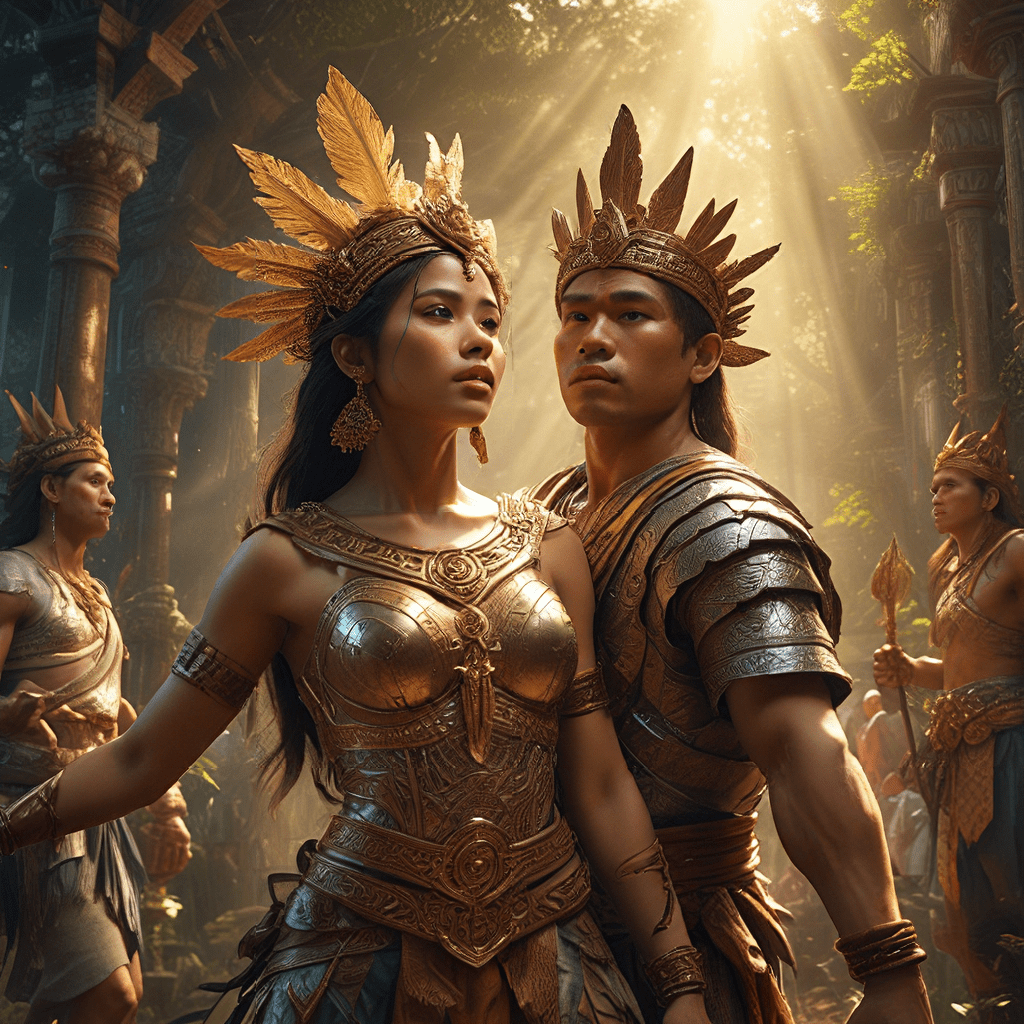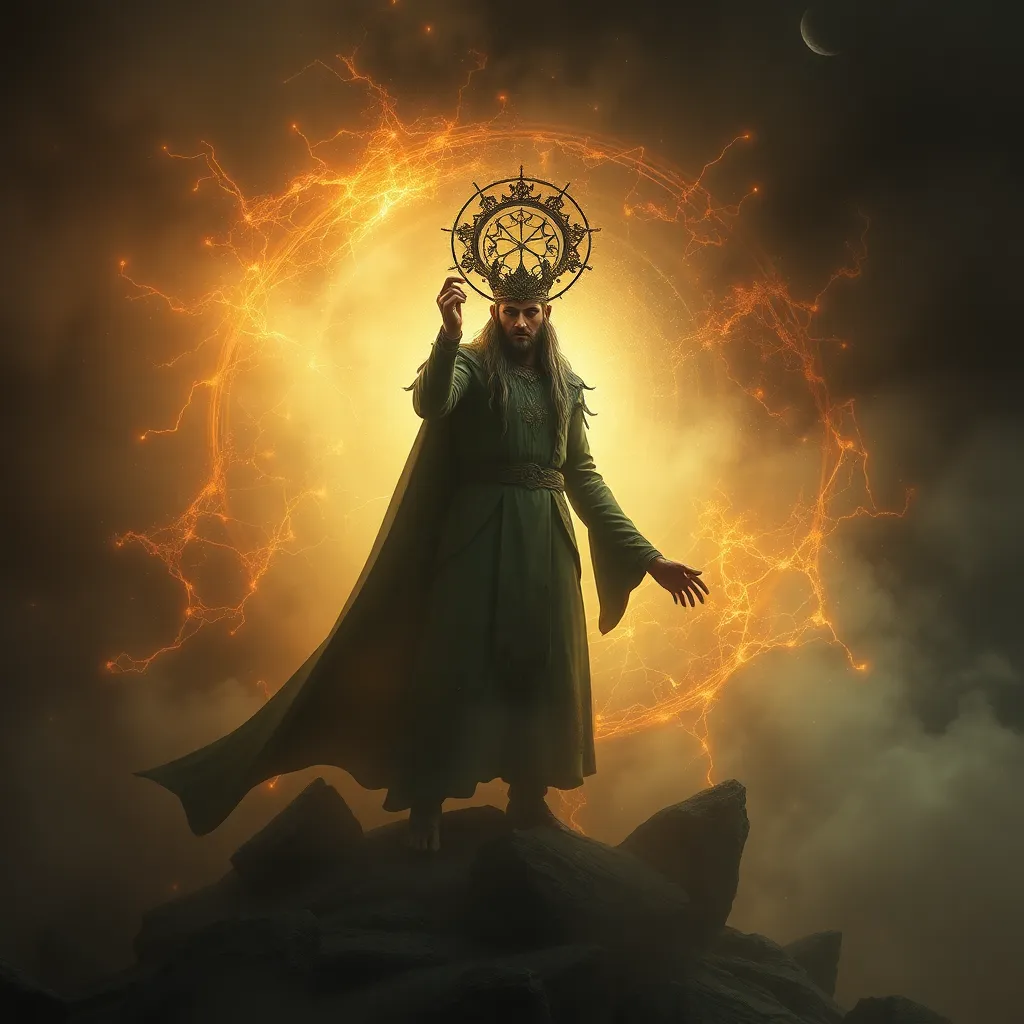Filipino Mythology: A Tapestry Woven by Ancestors
The Philippines, a vibrant archipelago in Southeast Asia, boasts a rich tapestry of myths and legends that have shaped its culture and identity. Filipino mythology is a fascinating blend of indigenous beliefs, animistic practices, and influences from neighboring cultures. At its heart lies the profound reverence for ancestors, a belief system that permeates every aspect of Filipino life.
The Pantheon of Filipino Deities: A Legacy of the Divine
Filipino mythology encompasses a diverse range of deities, each with their own unique powers and domains. These deities represent the forces of nature, the cycles of life, and the spiritual realm. Among the most prominent are Bathala, the supreme creator deity, and his consort, the goddess of fertility, Mayari. The pantheon also includes deities associated with specific aspects of life, such as the god of war, Apolaki, and the goddess of the moon, Hanan. These deities serve as intermediaries between the human and divine realms, offering guidance, protection, and blessings to those who seek their favor.
Ancestral Spirits: Guardians of the Living
In Filipino belief, the spirits of ancestors continue to exist in the afterlife and play an essential role in the lives of the living. These ancestral spirits, known as "kaluluwa" or "espiritu," are believed to be guardians and protectors of their descendants. They watch over their families, offering guidance, wisdom, and even intervention in matters of health, fortune, and relationships. Ancestors are believed to intercede with the deities to bring blessings and to protect their families from harm.
Mythological Creatures: Symbols of Nature and the Supernatural
Filipino mythology is also populated by a cast of fascinating creatures, each embodying specific characteristics and representing aspects of nature, the supernatural, and the human condition. Among the most well-known are the "tikbalang," a mischievous creature with a horse's head and a human body; the "kapre," a giant, tree-dwelling creature who smokes a pipe; and the "aswang," a shape-shifting creature that preys on the living. These creatures serve as reminders of the forces that exist beyond human comprehension and offer cautionary tales about the dangers of disrespecting nature and the supernatural.
The Role of Ancestors in Daily Life: Rituals and Beliefs
Ancestor worship plays a significant role in everyday life in the Philippines. Families often pray to their ancestors, seeking their guidance and blessing. Rituals, such as offerings of food and incense, are performed to appease and honor them. Ancestral tombs are visited and maintained as a sign of respect, and special ceremonies are held to commemorate their passing. The belief in the continued presence of ancestors permeates almost every aspect of Filipino life, from the design of homes to the social order, shaping the values and traditions of the Filipino people.
The Influence of Ancestor Worship on Filipino Culture: Values and Traditions
Ancestor worship has profoundly shaped Filipino culture, infusing it with a strong sense of family, community, and respect for tradition. Filipinos view their ancestors as a source of wisdom, guidance, and protection, shaping their values and beliefs.
One of the most prominent values rooted in ancestor worship is the concept of "utang na loob," which translates to "debt of gratitude." This principle emphasizes the importance of reciprocating kindness and favors received from others, especially from ancestors. Utang na loob motivates Filipinos to honor their ancestors, care for their families, and contribute to their communities. It’s a driving force behind many Filipino customs, such as offering assistance to neighbors and relatives and participating in community events.
The belief in the power and influence of ancestors fosters a strong sense of family ties and loyalty. Filipinos believe that they are bound by a spiritual connection to their ancestors, and this connection extends to all members of their extended family. This belief promotes a sense of responsibility and obligation to one's family, leading to close-knit families and strong community bonds.
Ancestor worship also fosters a deep respect for tradition. Filipino traditions, such as storytelling, music, and dance, often incorporate elements of mythology and ancestor worship. These traditions serve as a way to connect with the past, honor ancestors, and preserve their legacy. Through these traditions, Filipinos pass down their cultural heritage to future generations, ensuring that the spirit of their ancestors lives on.
The Stories of Creation: Explaining the Origins of the World and Humanity
Creation myths are fundamental to understanding a culture's origins and worldview. Filipino mythology offers rich and varied creation stories, often highlighting the role of deities and ancestral spirits in shaping the world and humanity.
One prominent creation myth tells of Bathala, the supreme creator deity, who emerged from a giant egg. He created the world and populated it with various creatures. He also created the first humans, Malakas and Maganda, who emerged from a bamboo stalk. This myth emphasizes the importance of Bathala's divine power and his role as the ultimate source of creation.
Another popular creation myth tells of the goddess of fertility, Mayari, who gave birth to the first humans from a giant clam shell. This story highlights the connection between the natural world, fertility, and creation. It also emphasizes the role of female deities in shaping the beginnings of humanity.
These creation myths provide insights into Filipino beliefs about the origin of the world, the nature of creation, and the relationship between humans and the divine. They also highlight the importance of ancestors and their connection to the origins of humanity.
The Impact of Colonialism on Filipino Mythology: Adaptation and Transformation
The arrival of Spanish colonizers in the 16th century had a profound impact on Filipino culture, including its mythology. The Spanish introduced Christianity, which clashed with indigenous beliefs. The colonizers sought to suppress traditional practices and replace them with Catholic doctrines. However, Filipino mythology proved resilient and adapted to the new circumstances.
Indigenous deities were often syncretized with Catholic saints. For example, Bathala was often identified with God the Father, and Apolaki with Saint Michael the Archangel. This blending of beliefs allowed Filipinos to retain some aspects of their traditional faith while embracing Christianity. Indigenous myths were also re-interpreted to align with Catholic dogma.
Despite the colonizers' attempts to erase indigenous beliefs, Filipino mythology survived in various forms. Many traditional stories and practices were passed down orally through generations, preserving the memory of indigenous beliefs. The colonial period also saw the emergence of new myths and legends that reflected the experiences of Filipinos under Spanish rule.
Theories of Ancestor Worship: Tracing the Roots of Filipino Beliefs
Numerous theories attempt to explain the origins of ancestor worship in the Philippines. One theory suggests that ancestor worship evolved from animistic beliefs, where spirits are believed to inhabit all things in nature, including humans. As people died, their spirits were thought to remain connected to the living, becoming powerful intermediaries between the human and spiritual realms.
Another theory proposes that ancestor worship emerged from the need for social cohesion and order. Respecting ancestors and their traditions served to unify communities and ensure social harmony. The belief in the power of ancestors also provided a framework for controlling social behavior and upholding moral norms.
Anthropologists have also pointed to the influence of neighboring cultures, such as those in Southeast Asia and China, where ancestor worship is prevalent. These theories suggest a complex interplay of cultural influences, environmental factors, and societal needs that shaped the development of ancestor worship in the Philippines.
The Significance of Ancestor Worship in Contemporary Filipino Society
Ancestor worship continues to hold significance in contemporary Filipino society, although its practices have evolved over time. While traditional rituals like offerings and ancestral tomb visits still occur, they are often integrated with modern practices.
With the increasing influence of globalization and modernization, Filipinos are navigating the complexities of preserving their cultural heritage while embracing new cultural influences. Ancestor worship serves as a reminder of their origins and provides a sense of continuity in a rapidly changing world.
Ancestor worship also plays a role in shaping contemporary Filipino identity. It offers a sense of belonging and connection to a larger community, both within families and in the broader Filipino diaspora. It also serves as a source of strength and resilience, helping Filipinos navigate the challenges of everyday life.
The enduring popularity of ancestor worship in the Philippines testifies to its cultural significance and its ability to adapt to changing times. It remains a vital aspect of Filipino life, connecting past, present, and future generations.
FAQ
What is the significance of ancestor worship in Filipino mythology?
Ancestor worship is a central theme in Filipino mythology, playing a crucial role in shaping the culture and beliefs of the Filipino people. It emphasizes the connection between the living and the deceased, viewing ancestors as guardians and protectors.
What are some of the most prominent deities in Filipino mythology?
Some of the most prominent deities in Filipino mythology include Bathala, the supreme creator deity, Mayari, the goddess of fertility, Apolaki, the god of war, and Hanan, the goddess of the moon. Each deity represents specific aspects of life and nature.
How has colonialism impacted Filipino mythology?
Colonialism introduced Christianity, leading to the suppression of indigenous beliefs and practices. However, Filipino mythology adapted by syncretizing indigenous deities with Catholic saints and reinterpreting myths to align with Catholic dogma.
What are some common rituals associated with ancestor worship in the Philippines?
Common rituals include offering food and incense to ancestors, visiting and maintaining ancestral tombs, and holding special ceremonies to commemorate their passing. These rituals aim to honor ancestors and seek their guidance and protection.
What is the significance of ancestor worship in contemporary Filipino society?
Ancestor worship continues to shape Filipino identity, providing a sense of belonging, connection, and resilience. It serves as a bridge between past, present, and future generations, offering a sense of continuity in a rapidly changing world.



